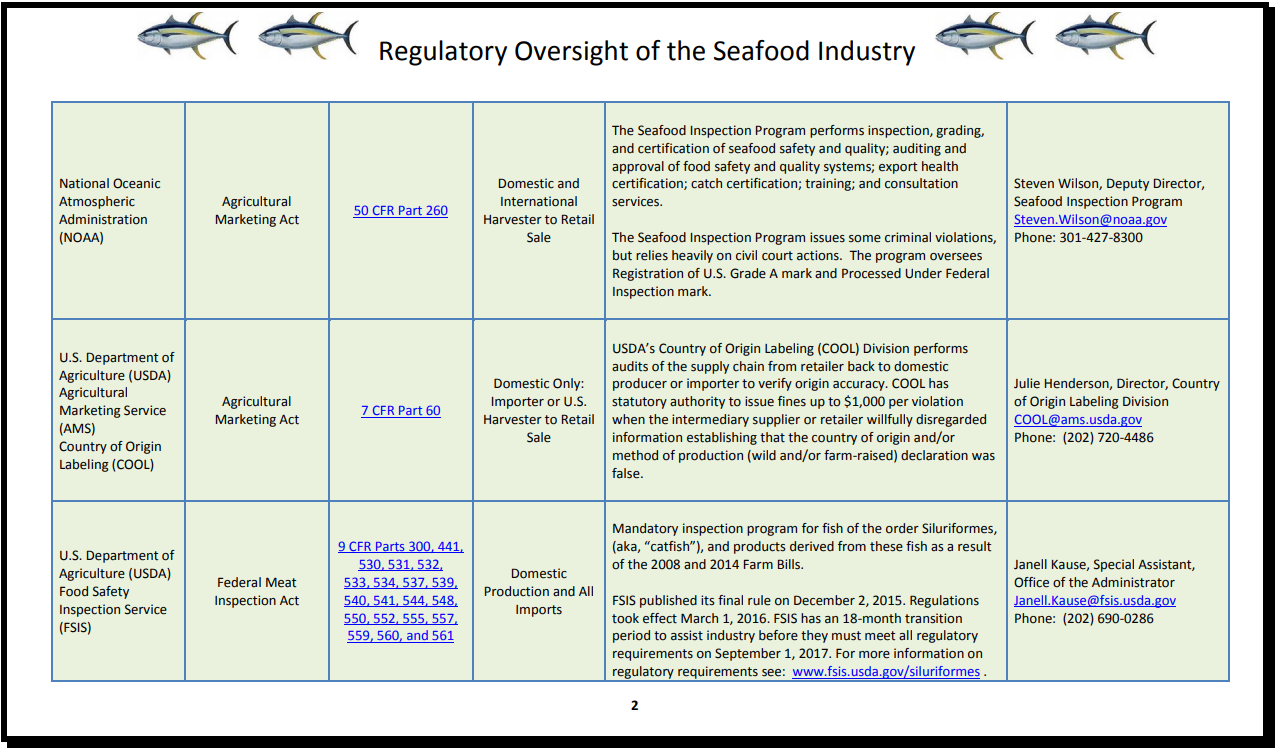This is the last of my updates on aquaculture. I have been sharing my observations on the status and trends of the industry. For my final update I would like to focus the current environment and opportunities for U.S. aquaculture.
Consumer Trends
It stands to reason that U.S. aquaculture is closely tied to the global aquaculture industry. Since a significant portion of seafood consumption occurs in retail food service establishments, overall consumption is expected to drop due to COVID-19 related closures. On the positive side, the American consumer has become much more comfortable in preparing seafood at home. According to George Chamberlain, President of Global Aquaculture Alliance who spoke during a May 2020 online conference, consumers are expected to continue preparing more seafood at home after the restaurants are re-opened.
Food Safety
Up until recently, seafood imports and domestic seafood production were inspected by the Food and Drug Administration (FDA). The FDA is also charged with inspection of non-USA plants that process seafood. In the past, FDA has come under fire due to reports that only 2% of imported seafood was being inspected. More recently the FDA has received additional funding for inspections. This news was generally welcomed by U.S. producers who must compete against lower priced imports that may contain undetected antibiotics and other banned substances.
In researching the regulatory oversight of the seafood industry in the U.S., I found the following tables provided by the USDA Agriculture Marketing Service (AMS) that provides a comprehensive view of the regulatory environment.


Since the passage of the U.S. Farm Bills of 2008 and 2014, the United States Department of Agriculture (USDA), Food Safety and Inspection Service (FSIS) also inspects Siluriformes, including catfish, under the Federal Meat Inspection Act. When you are shopping for catfish, look for the USDA inspection mark on the packaging. In my personal opinion, I would prefer purchasing seafood from a USDA inspected source rather than the random inspection of imports provided by the FDA.
Looking to the Future
With the current impact of COVID-19 on the global economy, all industries are going to experience challenges. In the longer term, I believe there are encouraging changes that will benefit the U.S. aquaculture industry specifically and, indirectly, U.S. agriculture. Such as:
- Sustainability improvements like Recirculating Aquaculture Systems (RAS) that reduce the amount of water needed.
- Changes in feed rations that introduce agriculture products like soybean meal and animal processing by-products such as bone meal and feather meal to replace fish meal and fish oil.
- Increased inspection of foreign and domestic seafood products.
- Consumer trend in adding seafood to home prepared meals.
- Introduction of new strains of existing species such as Aqua Bounty’s recently introduced AquAdvantage Salmon. This strain grows at twice the rate on less food than typical Atlantic Salmon.
While this is the last of a series of blogs on Aquaculture, I will continue monitoring the industry on behalf of the DIS team.

